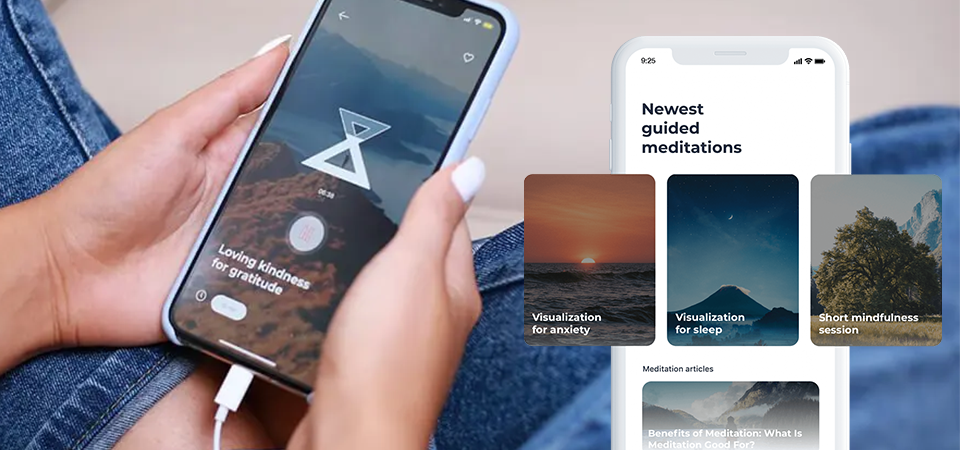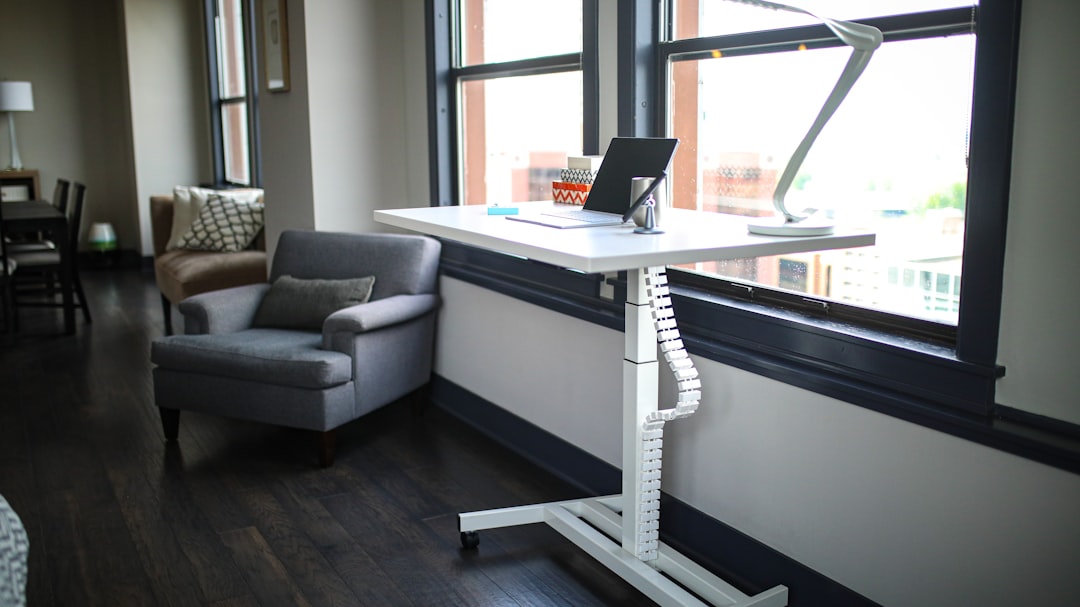Finding the best tools for work-life balance has become essential as the boundaries between our professional and personal lives continue to blur. I've spent years wrestling with emails that follow me home, work thoughts that creep into family dinners, and the constant feeling that I'm always "on." Through trial and error, I've discovered that the right combination of apps, techniques, and mindset shifts can genuinely help create clearer boundaries between work and life.
The key isn't just having tools—it's choosing ones that actually fit your lifestyle and help you establish genuine separation between work time and personal time. Some tools help you mentally transition from work mode, others physically block distractions, and a few help you build the mindfulness needed to stay present in whichever space you're in.
Meditation and Mindfulness Apps for Mental Transitions
The most powerful tools I've found for work-life boundaries aren't productivity apps—they're the ones that help me mentally shift between roles. Meditation has been game-changing for creating clear transitions between work mode and home mode.
Declutter The Mind

I start with Declutter The Mind because it offers specific meditations designed for work transitions. Their after intense meeting sessions have become my go-to for mentally leaving work stress at the office. The app includes guided meditations for burnout prevention and feeling overwhelmed, which directly address the challenges of maintaining work-life boundaries.
What sets this app apart is its practical approach to workplace stress. Instead of generic relaxation sessions, you'll find meditations specifically for work conflict resolution and productivity without burnout. The meditation timer feature is perfect for quick five-minute transitions between work and personal time.
Building Transition Rituals
I've learned that how to meditate at work during breaks, but the real magic happens in using meditation as a bridge between work and home. A simple five-minute breathing session when I get home signals to my brain that work is over. This practice of mindful living helps me stay present with my family instead of mentally reviewing the day's meetings.
Digital Boundary Tools
Technology created many of our work-life balance problems, but it can also solve them when used intentionally.
Focus and Website Blockers
Cold Turkey Blocker has been essential for creating hard stops on work-related browsing after hours. I set it to block work websites and email clients after 6 PM, removing the temptation to "just check one thing." The physical barrier helps reinforce the mental boundary.
Forest is another favorite—it gamifies focus time by growing virtual trees during work blocks and killing them if you access distracting apps. I use it to create dedicated work periods, knowing that when the tree grows, work time is officially over.
Email and Communication Management
Boomerang for Gmail lets me schedule emails to send during business hours, even if I write them at night. This prevents me from training colleagues to expect immediate responses and helps maintain professional boundaries.
I've also set up automatic out-of-office replies that activate after work hours, clearly stating when I'll respond to non-urgent messages. It's amazing how this simple boundary-setting tool reduces both others' expectations and my own feeling overwhelmed by constant connectivity.
Time Management and Productivity Tools
The right productivity tools don't just help you work faster—they help you work within clear time boundaries so personal time stays protected.
Time Tracking Apps
RescueTime runs in the background and shows me exactly how I spend my time across devices. The insights were eye-opening—I discovered I was spending two hours each evening on "quick work tasks" that were stealing family time. Seeing the data made the invisible visible and motivated real change.
Toggl helps me track project time during work hours, ensuring I'm not constantly wondering if I did "enough" work today. When I know I've put in focused hours on important tasks, it's easier to truly disconnect in the evening.
Task and Project Management
Todoist has become my external brain for work tasks. By capturing everything in one system, I don't carry mental lists home with me. The weekly review feature helps me plan realistic workloads instead of constantly feeling behind.
Asana works well for team projects, keeping work communication organized in one place rather than scattered across emails that follow me home. When work discussions stay in work tools, it's easier to leave them there mentally too.
Physical Environment Tools
Creating physical separation between work and personal spaces—even in small living situations—makes a significant difference in maintaining boundaries.
Workspace Organization
A simple laptop stand that I set up and put away each day creates a ritual around work time. When the laptop goes up on the stand, work begins. When it comes down and closes, work ends. This physical action reinforces the mental transition.
Blue light blocking glasses have helped my sleep quality, which in turn helps me feel more refreshed and able to maintain boundaries. When I'm well-rested, I'm less likely to blur work and personal time.
Lighting and Ambiance
Philips Hue lights let me change the lighting when transitioning from work to personal time. Cooler, brighter light during work hours shifts to warmer, dimmer light for evening. This environmental change signals the transition as clearly as changing clothes.
A small essential oil diffuser with energizing scents during work and relaxing ones after helps create distinct atmospheres for different parts of the day. These grounding techniques help anchor me in the present moment and current role.
Stress Management and Recovery Tools
The best work-life balance tools help you actively recover from work stress rather than just stopping work activities.
Breathing and Relaxation Apps
The 4-7-8 breathing timer on Declutter The Mind has become my go-to for quick stress relief during work transitions. Just three rounds of this breathing pattern helps activate my parasympathetic nervous system and shift from work stress to relaxation mode.
Box Breathing techniques, available through the box breathing visualizer, help me reset between challenging work situations and personal time. These tools address the physiological aspects of stress that meditation alone sometimes can't reach.
Sleep and Recovery Support
A good sleep tracking app helps me see how work stress affects my rest quality. When I notice patterns—like poor sleep after late work sessions—it motivates better boundary-setting. The best position to sleep and good sleep hygiene become part of maintaining work-life balance.
Insight Timer offers sleep stories and bedtime meditations that help me process the day and transition into rest. When work thoughts keep cycling, these guided sessions provide a gentle redirect toward recovery.
Communication and Boundary-Setting Tools
Sometimes the most important tools for work-life balance are the ones that help you communicate your boundaries clearly to others.
Calendar Management
Google Calendar's "working hours" feature shows colleagues when I'm available and automatically declines meetings outside those times. Setting these digital boundaries reduces the need for awkward conversations about availability.
I block "transition time" on my calendar—30 minutes at the end of each workday for wrapping up tasks and mentally shifting modes. This prevents back-to-back meetings from running into personal time and gives me space to process the day.
Professional Communication
Slack's "Do Not Disturb" scheduling ensures I'm not getting work notifications during family time or relaxing activities before bed. The key is actually using these features consistently rather than leaving them turned off "just in case."
Creating email templates for common boundary-setting situations saves time and mental energy. Having pre-written responses for declining after-hours requests or rescheduling meetings makes it easier to maintain limits without stress.
Making These Tools Work Together
The magic happens when these tools work together as a system rather than individual solutions. I've learned that setting boundaries requires both inner work—like meditation and stress management—and outer tools like apps and environmental changes.
My typical transition from work to personal time now involves: closing work applications, doing a five-minute breathing exercise using the coherent breathing timer, changing my lighting setup, and spending a few minutes with a transition meditation. This routine signals to my brain and body that work is complete.
The tools that work best are the ones you'll actually use consistently. Start with one or two that address your biggest challenges—whether that's work thoughts following you home, constant email checking, or difficulty winding down after stressful days. Build the habit with these tools before adding others.
Remember that the goal isn't perfect separation between work and life, but conscious choice about when and how they intersect. The best tools for work-life balance are the ones that give you control over these transitions, helping you be fully present in whatever role you're playing at the moment. When you can truly leave work at work and be present for your personal life, both areas of your life tend to improve.







